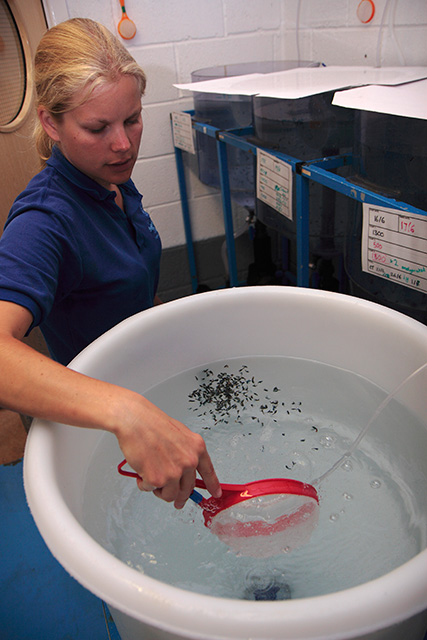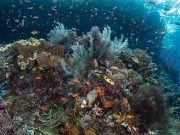The UK National Lobster Hatchery has developed a new kind of larval rearing vessel, which can be used to improve lobster survival in the hatchery and ultimately help support lobster stocks.

The National Lobster Hatchery is a marine conservation, research and education charity based in Padstow, Cornwall, UK. Their work is specifically related to a commercial species – the European Lobster. A vital element of the National Lobster Hatchery’s work focuses on the larval stage of the lobster lifecycle. In the wild, the survival rate at the larval stage is very low. The National Lobster Hatchery seeks to improve survival at this early, vulnerable stage of the lobster’s life and release them back into the wild at an age where they are less vulnerable and more able to fend for themselves.
Only one of 20000 eggs carried by a lobster mother survives to adulthood
A female lobster can carry in the region of 20,000 eggs under their abdomen. However, only one of these is expected to survive in the wild. With skilful and careful application of modern technology, the National Lobster Hatchery can improve this survival rate by about 1,000 times.
Dr Carly Daniels of the National Lobster Hatchery explains:
“We currently use modified conical vessels to keep the larvae in suspension. Now, based on our own preliminary work, we believe that it may be possible to create an enhanced larval vessel with conditions that enable greater survival rates “
Marine-i is working with National Lobster Hatchery to develop an innovative prototype for testing. Ruadan Geraghty from Marine-i partner University of Plymouth, says:
“We are carrying out exhaustive research into the best materials to deliver the ultimate aim of improved lobster larval survival. We are aiming for materials to be sustainable and recyclable, as well as sufficiently robust to withstand the rigors of the marine environment.”
The National Lobster Hatchery will test the prototype in the hatchery from the start of the new larval season in May 2022, with the help of Marine-i partner, University of Exeter.
Dr Carly Daniels adds:
“If the new larval vessel is proven to achieve higher survival rates than the vessels we currently use, then we will look to move to large scale production of the new vessels for future use. This would be a very exciting outcome. The National Lobster Hatchery is one of only very few organisations worldwide which is investigating how innovative improvements can be made in this area.”
The research was supported by Marine-i, an organisation designed to help the marine technology sector in Cornwall and the Isles of Scilly grow through harnessing the full potential of research and innovation.
Professor Lars Johanning, Programme Director for Marine-i, says:
“Marine-i are delighted to help accelerate this exciting innovation through the academic and research expertise within the Marine-i partnership. This could help meet the challenge of global food security for future generations as well as strengthen the local economy. If successful, the new larval vessel is likely to have worldwide applications, not only for use by other lobster hatcheries, but also for larval survival of similar crustacean species such as crabs and other lobster species.”
Main photo: E2OMedia/Pixabay















Thank you for your dedication in making fish farming easier, especially lobsters. This is very useful for the advancement of knowledge and income of marginalized communities (fishermen), God bless